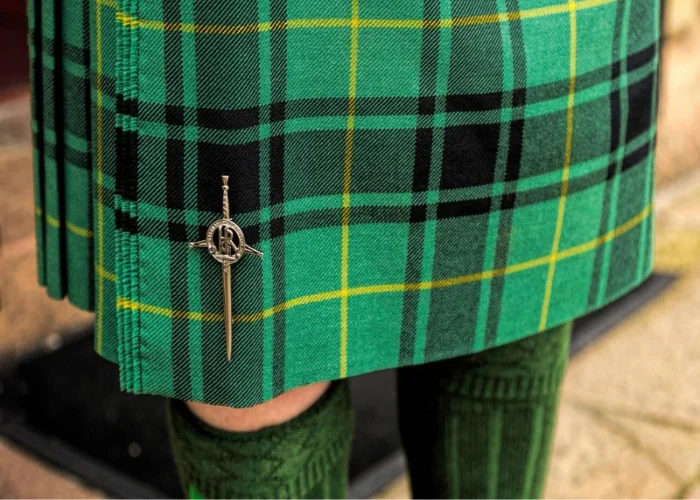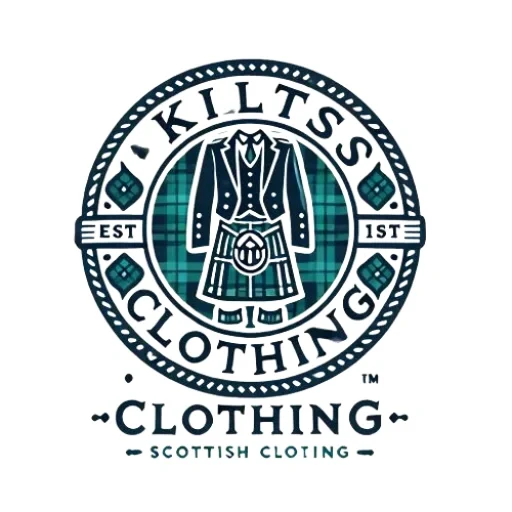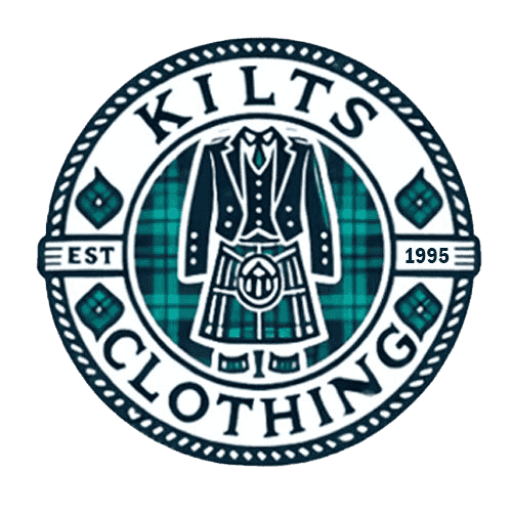The Best Ways to Select and wear a Kilt Pin

The kilt pin is a small but crucial component for adding both flair and functionality to traditional Scottish attire. Despite its modest size, the kilt pin plays a significant role in the overall appearance and practicality of the kilt ensemble. This guide will delve into the kilt pin's history, purpose, selection, and proper wear, providing a thorough understanding of this essential accessory.
History of the Kilt Pin
Scotland is home to a kilt pin's long and storied past. Originally, they were simple implements for keeping the kilt's outer apron from fluttering in the wind
. As time went on, they developed into ornamental items that showed off the wearer's clan membership, personal accomplishments, or tastes. It all started in the 19th century when Queen Victoria gave a Highland soldier a pin to fasten his kilt, which became a stylish practice.
Kilt pins: why are they worn?
Functionality :ilt pins are primarily used to prevent the front apron of the garment from flapping open when worn. When the wind picks up, this prevents the kilt from flapping about and looking untidy.
Decoration :Kilt pins are useful as an additional decorative feature. By accessorizing with modern designs, traditional motifs (such as the Scottish thistle), or marks of clan allegiance, they enable wearers to show their personal style and ancestry.
How to Wear Your Kilt Pin
Wearing a kilt pin correctly is essential for both functionality and aesthetics. While it may seem like a small detail, the proper placement and selection of a kilt pin can significantly enhance the overall appearance of your kilt ensemble. Here, we will guide you through the steps of wearing a kilt pin correctly, ensuring that you achieve both practical benefits and a polished look.
Placement
- Positioning : The kilt pin should be placed on the front apron of the kilt, about 3-4 inches from the bottom edge and 1-2 inches from the side edge. This position ensures the pin is visible but not too close to the edge.
- Angling : The pin should be angled slightly upward to prevent it from slipping down and to ensure it stays securely fastened.
Securing the Pin
- Proper Attachment : The kilt pin should go through the top layer of the kilt apron only. It shouldn't pin together the front and back aprons. This allows the kilt to move naturally while keeping the front apron secured.
- Avoiding Restrictions : Pinning through both aprons restricts movement and can cause the kilt to pull awkwardly. Ensure the pin is only attached to the front apron for maximum comfort and proper drape.
Choosing the Right Kilt Pin
When selecting a kilt pin, consider the style, material, size, weight, theme, and occasion.
Style and Design
- Traditional Motifs Traditional kilt pins often feature symbols of Scottish heritage such as the thistle, Celtic knots, and clan crests. Sword designs are also popular, reflecting Scotland’s martial history.
- Modern Styles Modern kilt pins come in various designs, from minimalistic shapes to themes that reflect personal interests or hobbies.
- Customization Options Personalized kilt pins can include initials, family crests, or special symbols that hold personal significance.
Material
- Common Materials Kilt pins are typically made from durable metals like stainless steel, pewter, sterling silver, and gold. Each material offers unique qualities:
- Stainless Steel: Known for its strength and resistance to tarnish.
- Pewter: Offers a traditional look with a matte finish.
- Sterling Silver: Provides a high-quality, polished finish.
- Gold: Exudes luxury and elegance.
- Finishes: The finish of the kilt pin can affect its appearance. Polished finishes offer a shiny, reflective surface, while matte finishes provide a subtle look. Antiqued finishes give the pin a vintage feel.
Size and Weight
- Right Size The kilt pin should be proportional to the size of the kilt. A pin that's too large can look overpowering, while one that's too small may go unnoticed.
- Right Weight The weight of the kilt pin is crucial for comfort and functionality. A pin that's too heavy can weigh down the apron and cause it to sag. Conversely, a lightweight pin might not keep the apron in place. Choose a well-balanced pin that stays secure without causing discomfort.
Theme and Occasion for wearing kilt pin
- Formal Events For formal occasions like weddings or ceremonies, opt for a traditional and elegant kilt pin. Designs featuring clan crests, thistles, or intricate Celtic knots are appropriate.
- Casual Wear Casual events offer more flexibility in design choices. Modern or playful designs can reflect personal interests or contemporary fashion trends.
- Clan Affiliation If you have a specific clan affiliation, selecting a kilt pin with your clan crest or tartan colors can be meaningful.
Coordination with Other Accessories
- Matching Accessories To create a cohesive look, match the kilt pin with other metal accessories like your belt buckle, sporran, and brooch.
- Balancing Your Outfit The kilt pin should complement the rest of your outfit without overpowering it. Choose a pin that enhances your attire while maintaining balance and harmony.
Tips for Wearing a Kilt Pin
- Comfort Make sure the pin is comfortable and doesn't poke or irritate your leg when sitting or moving. Test different positions and angles to find the most comfortable placement.
- Maintenance Regularly polish and clean your kilt pin to keep it looking its best. Use appropriate cleaning methods for the material to avoid damage.
- Experimentation Don’t be afraid to try different kilt pin styles and placements to find what works best for you. Personalize your look and showcase your unique style.
- Expressing Heritage The kilt pin is an opportunity to express your personal style and connection to Scottish heritage. Choose a pin that resonates with you and wear it with pride.
Conclusion
The kilt pin is a small but significant accessory that completes the traditional Scottish kilt outfit. By choosing the right style, material, size, and weight, and by wearing it correctly, you can enhance your kilt attire and showcase your personal style and heritage. Whether for formal events or casual wear, the kilt pin adds a touch of elegance and functionality to your outfit, making it an essential element of Scottish dress.
FAQs
A kilt pin is worn to add weight to the front apron of a kilt, preventing it from flapping open, while also serving as a decorative accessory that enhances the overall look.
The Prince Charlie jacket is more formal, featuring satin lapels and tails, ideal for black-tie events. In contrast, the Argyll jacket is versatile, with simpler styling suitable for various formal and semi-formal occasions.
A kilt pin is worn to add weight to the front apron of a kilt, preventing it from flapping open, while also serving as a decorative accessory that enhances the overall look.
A kilt pin is placed on the right-hand side of the front apron of the kilt, about 4 inches from the bottom and 2 inches from the edge. It should be attached to the front apron only, not through both layers of fabric, to allow the kilt to move freely.
The purpose of a kilt pin is twofold: it adds weight to the front apron of the kilt to keep it from flapping open and serves as a decorative accessory that enhances the kilt’s overall appearance.


